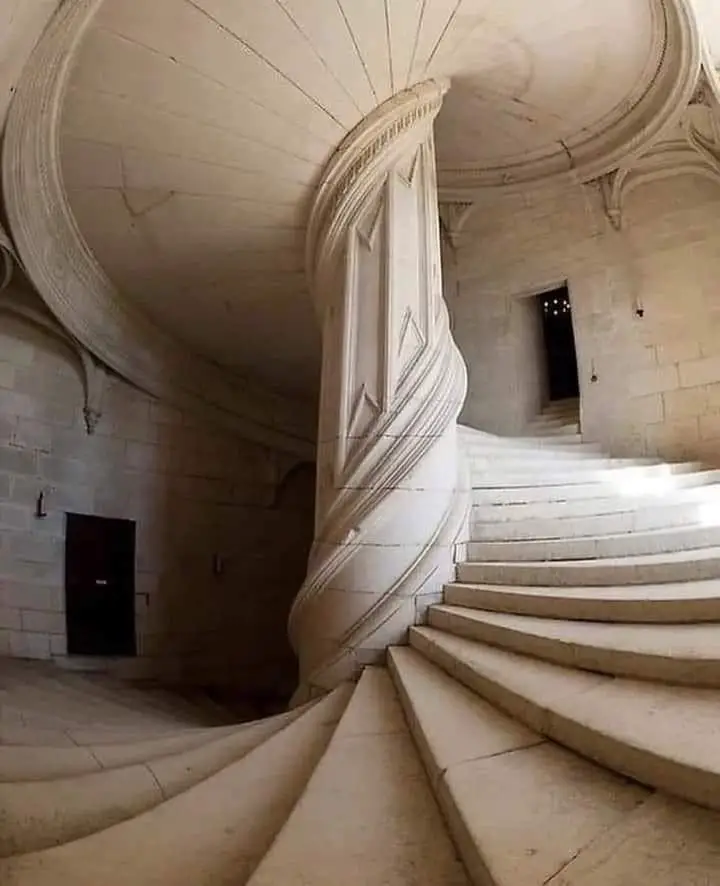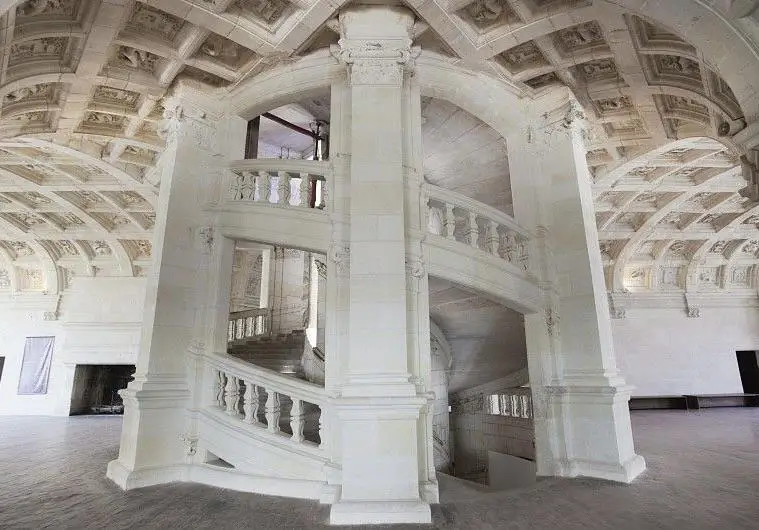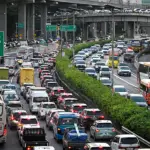One of the most iconic elements of French Renaissance architecture lies within the majestic Château de Chambord, a sprawling castle in the Loire Valley of France. Among its many remarkable features, the double helix staircase, attributed to none other than Leonardo da Vinci, stands out as a testament to architectural ingenuity and Renaissance artistry.

Leonardo da Vinci and Château de Chambord
While the Château de Chambord was commissioned by King Francis I in 1519, Leonardo da Vinci’s involvement predates the start of its construction. The Italian polymath had been invited to France by Francis I in 1516, spending his final years at Clos Lucé, near the Loire Valley.
Although there is no definitive documentation confirming da Vinci’s direct role, the design of the double helix staircase is widely attributed to him due to its innovative concept and resemblance to his sketches. This staircase reflects da Vinci’s mastery of both art and engineering, blending functionality with an aesthetic brilliance that was ahead of its time.

A Staircase Like No Other
The double helix staircase is a masterpiece of design, showcasing an intricate structure where two spiral staircases intertwine without ever meeting. This ingenious design allows two individuals to ascend or descend simultaneously, maintaining visual contact through the openings but never crossing paths.
The staircase’s construction consists of:
- Twin spirals: Two separate staircases that wind around a central hollow column.
- Natural lighting: Large windows flood the staircase with light, highlighting its architectural elegance.
- Symmetry and proportion: Hallmarks of Renaissance design, emphasizing balance and harmony.
Symbolism and Inspiration
The double helix staircase’s design has often been interpreted as a metaphor for unity and duality. This symbolism aligns with the Renaissance ideals of blending opposites, such as art and science or heaven and earth.
Some historians believe the staircase could have been inspired by da Vinci’s studies of human anatomy and DNA-like structures, showcasing his ability to draw connections between natural forms and architectural innovation.
A Central Feature of Château de Chambord
The staircase occupies the heart of the Château de Chambord, serving as both a practical and symbolic focal point. Surrounded by a grand central hall, the staircase invites visitors to explore the castle’s 440 rooms, 84 staircases, and 365 fireplaces. Its design is a testament to the ingenuity of the Renaissance and the visionary minds that shaped it.
Legacy of the Double Helix Staircase
The double helix staircase has endured as a symbol of architectural brilliance and creative genius. Whether or not da Vinci himself crafted every detail of its design, the staircase embodies his spirit of innovation and curiosity. It continues to captivate visitors from around the world, standing as a tribute to the timeless beauty of Renaissance architecture.
Like Us on Facebook!
Final Thoughts
The double helix staircase of Château de Chambord is more than just a functional feature—it is a work of art, a marvel of engineering, and a historical treasure. Its innovative design, attributed to Leonardo da Vinci, showcases the fusion of science and artistry that defines the Renaissance era.
Subscribe Us on YouTube!
As visitors ascend its spirals, they walk in the footsteps of history, experiencing firsthand the enduring legacy of one of the world’s greatest minds.
Credits to the rightful owner for preserving and sharing this remarkable piece of history.


















